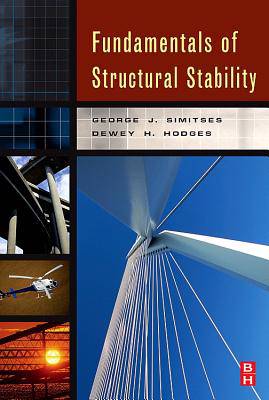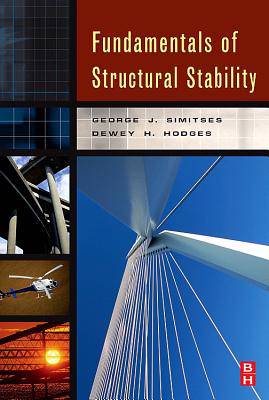
- Retrait gratuit dans votre magasin Club
- 7.000.000 titres dans notre catalogue
- Payer en toute sécurité
- Toujours un magasin près de chez vous
- Retrait gratuit dans votre magasin Club
- 7.000.0000 titres dans notre catalogue
- Payer en toute sécurité
- Toujours un magasin près de chez vous
179,95 €
+ 359 points
Description
The ability of a structural assembly to carry loads and forces determines how stable it will be over time. Viewing structural assemblages as comprising columns, beams, arches, rings, and plates, this book will introduce the student to both a classical and advanced understanding of the mechanical behavior of such structural systems under load and how modeling the resulting strains can predict the overall future performance-the stability-of that structure. While covering traditional beam theory, the book is more focused on elastica theory in keeping with modern approaches. This text will be an expanded and updated version a similar, previously published book, but with pedagogical improvements and updated analytical methods.
This engineering textbook will provide a focused treatment on the study of how structures behave and perform when under stress loading, including plastic deformation and buckling. All advanced engineering students studying engineering mechanics, structural analysis and design, fatigue and failure, and other related subjects need to have this knowledge, and this book will provide it in a thorough and coherent fashion. Written by two of the world s leading engineering professors in this subject area, the pedagogy has been classroom-tested over many years and should find a receptive readership among both students and instructors.
* An understandable introduction to the theory of structural stability, useful for a wide variety of engineering disciplines, including mechanical, civil and aerospace engineering
* Covers both static and dynamic loads, for both conservative and nonconservative systems
* Emphasizes elastic behavior under loads, including vertical buckling, torsional buckling and nonlinear affects of structural system buckling and stability
* Case examples to illustrate real-world applications of Stability Theory"
This engineering textbook will provide a focused treatment on the study of how structures behave and perform when under stress loading, including plastic deformation and buckling. All advanced engineering students studying engineering mechanics, structural analysis and design, fatigue and failure, and other related subjects need to have this knowledge, and this book will provide it in a thorough and coherent fashion. Written by two of the world s leading engineering professors in this subject area, the pedagogy has been classroom-tested over many years and should find a receptive readership among both students and instructors.
* An understandable introduction to the theory of structural stability, useful for a wide variety of engineering disciplines, including mechanical, civil and aerospace engineering
* Covers both static and dynamic loads, for both conservative and nonconservative systems
* Emphasizes elastic behavior under loads, including vertical buckling, torsional buckling and nonlinear affects of structural system buckling and stability
* Case examples to illustrate real-world applications of Stability Theory"
Spécifications
Parties prenantes
- Auteur(s) :
- Editeur:
Contenu
- Nombre de pages :
- 480
- Langue:
- Anglais
Caractéristiques
- EAN:
- 9781493303113
- Date de parution :
- 03-01-06
- Format:
- Livre broché
- Format numérique:
- Trade paperback (VS)

Les avis
Nous publions uniquement les avis qui respectent les conditions requises. Consultez nos conditions pour les avis.






